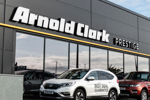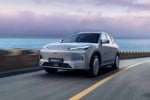By Paddy Whiteway, client services director at Engine Service Design
The automotive industry is facing its biggest era of change since the advent of the internet, as customers’ retail behaviours, expectations and preferences relentlessly evolve.
While other sectors seem more able to actively adapt to emerging consumer trends, the motor trade’s historic and continued investment in a linear processed, facility-focused model seems a hard habit to break. But how long can the traditional franchised network set-up be sustained?
Gone are the days when people made multiple visits before buying and religiously went to franchised dealers to service their cars. With ever more sophisticated online and mobile tools, alternative collection and delivery options becoming more commonplace, and a strengthening independent maintenance and repair sector, the role and viability of the dealership, as we know it, must surely be in question.
So what are the key issues and consumer trends driving this need for change and what can manufacturers and dealers do about it?
Putting customers at the heart of everything
Most dealerships have a business-centric rather than customer-centric outlook. They are mainly open when most of their customers are at work. Test drives and vehicle handovers are usually undertaken on the dealer’s terms. While customer vehicle servicing is based predominantly on the dealer’s availability and price structure.
For most customers, visiting a car dealership has to be planned, it’s not convenient and it can be an intimidating experience. Allied to the depth of pre-research that can be conducted online, it’s not surprising that, according to numerous sources, the number of dealership visits during purchase has fallen. Similarly in aftersales, with increased competition and extended service intervals, there are fewer opportunities for customer contact through the ownership cycle.
So, every contact, as rare as they are becoming must be choreographed with the greatest care especially at the most pivotal points in the journey. Delivering an excellent customer experience will become even more vital going forwards to retain customers for longer and create advocates.
From transactions to relationships
The current automotive purchase and ownership experience is predominantly transactional and based on sales and up-selling between sales and after sales functions, often at expense of the customer’s experience. But customers don’t come to a dealership to be sold to or put through a linear process.
We know the vast majority of customers will do research online and use numerous sources of information to make an initial choice or at least a shortlist. As such, when they do visit a showroom, they want an added-value experience that cannot be fulfilled through online alone.
Tomorrow’s customers will demand more than the current dealership experience – expecting new and more convenient ways to physically explore cars, take test drives and to make personal connections with brands on their own terms. If the experience is made relevant and rewarding, they’ll enjoy having their choices reaffirmed but a standard feature download and sales patter is likely to result someone else benefitting from the sale.
Engine Service Design worked with Hyundai to define the customer experience and staff behaviours for the launch of their new ‘Motorstudio’ brand space in Seoul. The environment is specifically designed not as a sales point but primarily for building brand image through hands-on interaction with features including an auto library, premium customer lounge, children’s play area, art gallery and cafe.
Overcoming business silos
Both manufacturer and dealership businesses traditionally manage their operations through departments in terms of what they do (sales vs. aftersales), how they view customers (prospect vs. customer, owner vs. non-owner) and how they see themselves (brand vs. dealer). But this ‘siloed’ structure drives a potentially repetitive, disconnected and impersonal customer experience rather than enabling a holistic and joined-up customer journey.
A customer or prospect does not look at a dealer in a ‘siloed’ way, they just have an experience with the brand, whether they are in the buying phase or ownership mode. Customers feel they are disregarded if they do not demonstrate intent to purchase and, when they do buy, they feel that the dealer’s relationship with them ends at handover, creating a real sense of disconnect just as their ownership experience with brand and dealer is starting.
Starting at manufacturer level, brands need to take stock of how each department’s initiatives and programmes impact or enable the customer experience at retail. Without a holistic view and a clearly defined vision of the desired customer experience, individual business areas will continue to exacerbate the disconnected sales and aftersales journey.
Merging digital and physical experiences in a relevant way
All industries have to recognise their target consumer’s digital behaviour and expectations and keep pace to ensure the digital experience is relevant and seamlessly joined-up with the physical experience (and vice-versa). In automotive, the start of the research phase will almost certainly be online and customers are far savvier than ever.
Mobile is increasingly being used in the purchase funnel and is also playing a greater role within the dealership for key activities such as: reviewing current models, looking for promotions/offers, talking to friends/family to get an opinion. With access anywhere to dealer and manufacturer sites, consumer reviews, video content and comparison tools, the need for a connected and seamless experience is greater than ever before.
We worked with new Chinese market entrant Qoros to define their service proposition and customer experience from scratch. Without the constraints of a legacy IT infrastructure the brand has launched with a seamless digital journey through research, purchase and ownership, all enabled through a range of online, mobile and in-store technologies including apps, configurators and dedicated website services.
Controlling your reputation
Consumers are playing an ever more important role in shaping the reputation of brands and dealers. There is more and more opportunity for people to independently post ratings, reviews, photos and video about their experiences and opinions of it. It’s akin to having an online content strategy that you can’t control.
Friends, family and peer groups are having an increasingly bigger influence on where people shop. Regardless of sector, it’s widely confirmed that consumers are over four times more likely to trust the recommendations of friends and family over advertising.
Taking that a step further, brands are losing control of other elements of the sales process as well. An increasing body of buyers who want longer-term test drives are accessing vehicles through friends, colleagues and rental firms in preference of going to a dealership – a trend that is only likely to become more prevalent.
Whiteway has over 20 years’ experience in the automotive sector having worked on the dealer group, manufacturer and agency side. Engine Service Design has worked internationally for Jaguar Land Rover, Fiat Group, Volkswagen, Hyundai and Qoros to design their future customer service approach and has also worked for brands such as Samsung, Zurich, E.ON, Virgin and O2 in other sectors.
The challenge of culture change
Clearly, there’s still a role for manufacturers to have a local physical presence for buyers to touch and test drive cars and customers still need to have their cars serviced and repaired. The way those experiences and services are delivered, however, is far from set in stone. As consumers become more confident with transacting online and legislation and security measures go further in protecting them, we’re likely to see more manufacturers switching on their online sales channels to meet demand.
Not only do the above have far-reaching implications on the way the industry does business but also the way dealerships are set up in terms of scale, function, location and most importantly, how they meet the evolving needs of the customers they serve.
The trouble is change takes time, resource and funding. The historic over-investment in the traditional network model will be hard to ‘write off’ by decision makers when evaluating the case for change and most franchised dealer networks are already stretched and under increasing pressure both from a personnel and financial perspective.
Of course there is increased industry focus on some of these issues and there are great examples of individual initiatives to tackle specific elements.
However, unless the need for change is viewed as a whole and appropriate solutions designed around a common vision of the required future-state, the likelihood is of more fragmented and disparate fixes that don’t deliver a sustainable step change in such a fast moving environment.













Login to comment
Comments
No comments have been made yet.